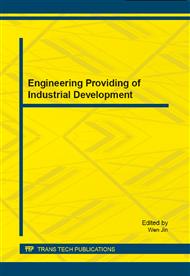p.72
p.77
p.83
p.90
p.99
p.105
p.111
p.117
p.124
Immune-Based Systems on Network Security Situation Awareness and Risk Prediction Model
Abstract:
In this paper, the process of the developments and changes of the network intrusion behaviors were analyzed. An improved epidemic spreading model was proposed to study the mechanisms of aggressive behaviors spreading, to predict the future course of an outbreak and to evaluate strategies to control a network epidemic. Based on Artificial Immune Systems, the concepts and formal definitions of immune cells were given. And in this paper, the forecasting algorithm based on Markov chain theory was proposed to improve the precision of network risk forecasting. The data of the Memory cells were analyzed directly and kinds of state-spaces were formed, which can be used to predict the risk of network situation by analyzing the cells status and the classification of optimal state. Experimental results show that the proposed model has the features of real-time processing for network situation awareness.
Info:
Periodical:
Pages:
99-104
Citation:
Online since:
September 2014
Authors:
Keywords:
Price:
Сopyright:
© 2014 Trans Tech Publications Ltd. All Rights Reserved
Share:
Citation:


